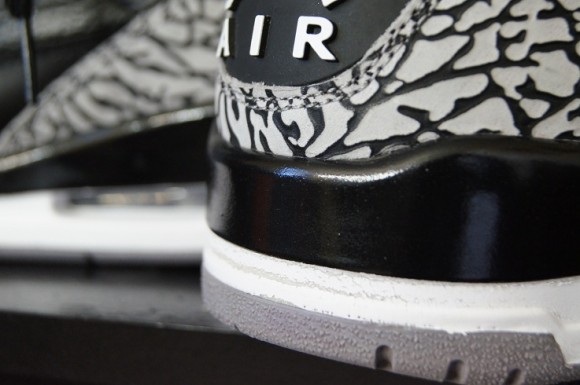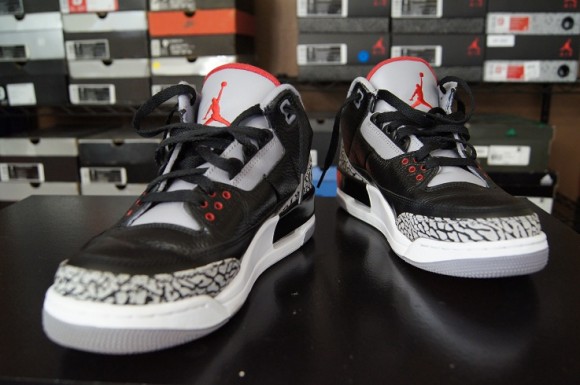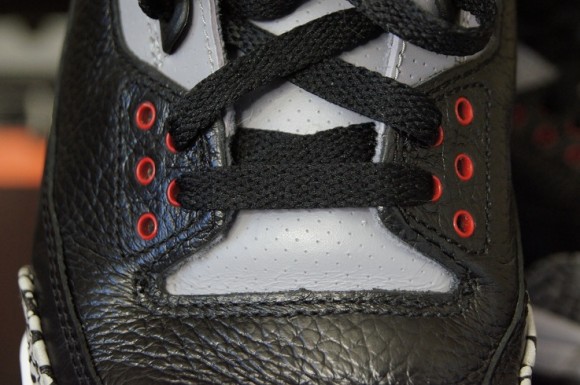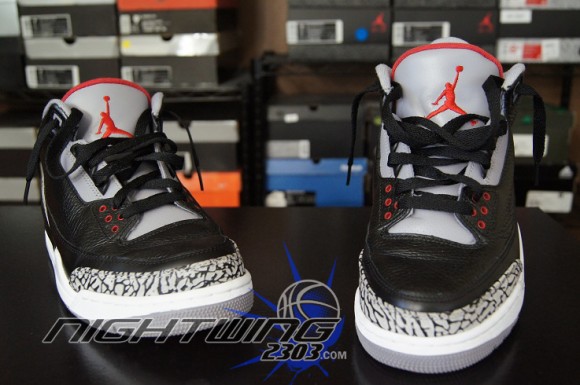tinmy 2021
i love this gametinmy 2021
i love this gameNike KD 16 Review: Major Changes, Still Great?
The Nike KD 16 presents a bunch of changes from the Nike KD 15, but it still might become one of the best basketball shoes of 2023-24.
Colorway: Crimson Red
Release Date: 2023
Price: $160
Kevin Durant’s signature line has been churning out bangers since the Nike KD 12 and the introduction of the full-length Zoom Air Strobel. The KD 12, 13, 14, and 15 have all been great all-around basketball shoes, that level up thanks to the plush yet responsive cushioning that the great Zoom Air Strobel provides.
Well, the Nike KD 16 is switching things up in a big way. Instead of the setup that we have come to know and love in the past years, we have something very comfortable, but very different. In any case, the KD 16 looks like it could be one of the best basketball shoes of the year, so let’s dive into the review and see everything the Nike KD 16 has to offer.
Nike KD 16 Review
Nike KD 16 Tech Specs:
Nike KD 16 Traction

In terms of traction, the KD 16 comes equipped with a translucent outsole (at least in this colorway) with a very interesting traction pattern, that looks like gears or cogs. As weird as it might be, it should work well on court because in terms of performance what that pattern ends up being is a radial traction pattern with great multidirectional coverage.
The translucent rubber Nike has used in this model is rather tough, but the traction pattern itself isn’t very deep, which means the KD 16 won’t be a great outdoor option. However, you can always try to get your hands on an overseas edition that features XDR rubber if you’re interested in using these outdoors.
Nike KD 16 Cushion

Here is where we have all of the major changes in the KD 16. Instead of a full-length Zoom Air Strobel what we have is a dual-density setup. From the midfoot to the heel we have an AIR Strobel, very similar to the one that was featured in the Jordan Zion 2. In the forefoot, we have a large Zoom Air unit that covers most of that area.
These two units are housed within a Cushlon foam midsole. This is a very different setup to the KD 15, but still a very comfortable one.
But why the change? The KD 16 design seems to be inspired loosely by the Nike Air Penny 2, and this change in the cushioning might be to mimic the setup in that shoe. Whatever the case may be, it’s comfortable and will give you a well-balanced ride on court.
Nike KD 16 Materials

The Materials on the Nike KD 16 are what we have come to expect from a KD shoe. We have a combination of a textile mesh and “leather”, all of which are synthetic. The build flexes well, it conforms and contains your foot, it’s very well-ventilated, and requires little to no break-in time. Nothing is premium on the shoe but everything should perform well.
Nike KD 16 Support

The most prominent support feature is the Nike Air Max 1 The Bay–esque TPU panel on either side of the shoe. These two pieces should offer all the lateral containment you need while making moves. On top of that, we have a TPU spring plate that goes from the midfoot all the way to the forefoot. This should provide torsional support and a nice springy feeling as you run.
The KD 16 also provides a very wide and stable base, with slightly rounded edges for added mobility. And, lastly, we have a decent heel counter to keep your heel locked down. This package should be more than enough to keep most players stable and secure on court.
Nike KD 16 Fit

The KD 16 fits true to size, but it’s a very snug “true to size”. This is optimal for performance but may be uncomfortable for some. If you have had issues with this type of fit in the past, we suggest trying these on in-store.
Nike KD 16 Overall

Even though the KD 16 is a very different shoe from what we have been accustomed to in recent years, it should still be an excellent performance model and should easily make our list of the best basketball shoes of the year.
What you can expect from the KD 16 is great indoor traction, a well-balanced cushioning system that will offer both impact protection and reactiveness on court, and a secure feeling shoe that will fit like a glove.
Nike Blazers Demystified: Basketball Shoes or Something Else?
Are Nike Blazers basketball shoes or something more? This question has sparked debates among sneaker enthusiasts and sports fans alike.
While Blazers have roots in basketball, their influence has extended beyond the court, captivating the worlds of fashion, street culture, and skateboarding. With their iconic design and versatile appeal, Nike Blazers Demystified effectively blur the lines between sports and style.
Let’s delve into the multifaceted nature of Blazers and explore why they’ve become much more than just basketball shoes!
The Burning Question: Are Blazers Basketball Shoes?

The short answer is: yes, Blazers are basketball shoes in every sense of the word.
But why the confusion? Why is there even doubt about the Blazer’s pedigree as a basketball shoe?
Over the years, Blazers have transcended their original purpose and become a fashion statement, embraced by sneaker enthusiasts and style-conscious streetwear followers.
Blazers have evolved beyond their original purpose as performance basketball shoes and have become fashion icons. Their popularity in fashion might lead some people to question their credibility as serious basketball footwear.
Of course, Blazers have a rich history in basketball, with a legacy spanning decades. While part of the Blazer legend is due to its widespread popularity in fashion, they still maintain the performance features necessary for the sport.
Why are Nike Blazers a Good Choice for Basketball?
Besides being fashion icons, Nike Blazers have earned a reputation for providing the necessary support, traction, and stability for basketball players to perform at their best on the court.
Let’s take a look at why Nike Dunk are highly regarded as basketball shoes and how they elevate the game for athletes and others who lace them up:
Traction: Nike Blazers offer excellent traction during use, thanks to the herringbone tread and durable vulcanized rubber soles. The tread patterns on the sole help improve maneuverability on the court’s surface.
Materials: Nike Blazers feature durable suede and leather uppers, making them well-suited for the demands of basketball. These materials ensure longevity, provide crucial support for the feet and heels, and improve stability during gameplay.
Support: The mid-top versions of Nike Blazers offer superior ankle support and protection, making them ideal for running and dribbling. With their high-top design, each pair provides added stability and protection for the ankle.
Blazers vs. Other Basketball Shoes: Style, Performance, and Functionality

When choosing the right basketball shoes, the options can be overwhelming. Among the many choices available, Nike Blazers stand out as a distinct and iconic footwear option for both on and off the court.
But how do Blazers stack up against other basketball shoes regarding style, performance, and functionality?
One key factor that sets Blazers apart is their unique and timeless design. With their retro-inspired aesthetic and classic silhouette, Blazers exude a sense of style that appeals to sneaker enthusiasts and fashion-conscious individuals.
In terms of performance, Blazers may not offer the same level of advanced features as specialized basketball shoes. But they still provide adequate support, cushioning, and traction for recreational play. Blazers are particularly popular among streetball players and those seeking a combination of style and moderate performance.
Functionality is another aspect to consider. Blazers are extremely versatile, as they can be worn for various occasions beyond basketball. They are suitable for everyday wear and can complement various outfits, making them ideal for those seeking a shoe that transcends the court.
Admittedly, Blazers may not meet the needs of professional athletes or those who require advanced performance technologies. While they may not be the go-to choice for professional athletes or those seeking cutting-edge performance features, Blazers hold a special place in the sneaker world and appeal to individuals who appreciate their iconic design and versatility.
Jordan Luka 2 Review: An Improvement on the Luka 1?
The Jordan Luka 2 is similar to the Jordan Luka 1 in many ways, but at the same time, it is a very different performance model. It should prove to be a great hoop shoe for certain types of players.
Colorway: Manhunter
Release Date: 2023
Price: $130
The Jordan Luka 1 was designed specifically to enhance Luca Doncic’s signature stepback move. In the Jordan Luka 2, Jordan has tried to take the concept to a new level, boosting traits in the shoe to make it an even more effective tool for Luka’s game.
This, however, means that the Jordan Luka 2 does not feel much different on foot from the Jordan Luka 1. The Jordan Luka 1 was one of the best basketball shoes of 2022-23, but it was a very guard-specific shoe. So yes, it was great, but for a certain type of player. But let’s jump into the breakdown of the Luka 2 and see what’s new and what isn’t.
Jordan Luka 2 Review
Jordan Luka 2 Tech Specs:
Jordan Luka 2 Traction

The traction on the Luka 2 is practically identical to the traction that was featured on the Luka 1. We have practically the same radial traction pattern and the same translucent rubber. But, in this case, this is good news. The traction on the Luka 1 was amazing.
It offered great multidirectional coverage and gripped the court like no one’s business. So we should get exactly the same performance out of the Luka 2.
The one big drawback of this setup is that it’s not good for outdoor use, so make sure to keep them indoors if you want that tread to last.
Jordan Luka 2 Cushion

Again the cushion is very similar to the Luka 1. What we have in the Jordan Luka 2 is a full-length slab of Jordan’s Formula 23 Foam, housed within a dunk midsole carrier. Supposedly, this is a new version of Formula 23 which proved to be a very dense and reactive setup with very little compression or impact protection.
Now, this iteration might be bouncier, but not more plush. This setup feels almost neutral and slightly stiff. This is not a bad thing if you are looking for a reactive guard shoe that will get you off the blocks quickly, but if you want impact protection, look elsewhere.
Jordan Luka 2 Materials

Materials are a little hit or miss. On the positive side, the design is very Jordan-esque and this might turn out to be one of the best-looking shoes of the year. Also, in terms of performance, they do everything you want them to do. The synthetic suede overlays add containment, where the shoe needs it, and the textile portions keep the shoe breathable and lightweight.
On the other hand, and especially considering that these are $20 more expensive than the Jordan Luka 1, a material upgrade would have been nice. There weren’t big tech updates so upgrading the materials would have given us a bit more bang for our buck. But again, they will perform well on court so…there’s that…
Jordan Luka 2 Support

Support is where we have the most upgrades compared to the Luka 1. The Luka 2 has a similar spring plate in the forefoot that wraps around the midsole providing torsional support and lateral containment. The new materials on the upper will provide better lockdown and containment, but the lockdown was already great on the Luka 1 so it won’t be a very noticeable upgrade, and finally, the heel counter has been beefed up considerably.
Now the problem with this is that the shoe will require a longer break-in time to mold to your foot, so just keep that in mind.
Jordan Luka 2 Fit

The Jordan Luka 2 fits true to size, so go with whatever size you usually use with Jordan. Again, keep in mind that they will feel slightly stiff at first, and you will have to break them in.
Jordan Luka 2 Overall

The Jordan Luka 2 has the potential to be a great hoop shoe on court, but no matter how good it ends up being, it will most definitely be a shoe targeted for lighter, shiftier guards. This is not a shoe that everyone will enjoy.
Now, if you were looking for a shoe with awesome traction and lockdown with a reactive and responsive cushioning system that will keep you light on your feet as you play, the Luka 2 might be the shoe for you.
Air Jordan 3 Retro Performance Review
Hit the jump for full review…

Traction – The traction surface was much like the Air Jordan II, performed well no matter what you were doing. Texture is abundant throughout and the giant pivot point did not hinder their performance at all. Out of the first three Air Jordan models, the AJ1 has been the most equipped where traction is concerned but the AJ 3 are well above average.

Cushion – As you already know, my knees and legs cannot handle the cushion. The polyurethane midsoles are far too dense for me and even with an insole swap I was only partially pain-free until a certain point. There is some compression which is good but overall… it’s just not an ideal setup. If you are young, you won’t have much of an issue but for some of us older players, especially older players who can still run quickly, we need to be able to absorb as much impact as possible so our bodies can endure on-court play.

Material – The leather upper is decent enough and has some durability to it. Flexibility of the material itself was actually pretty good and I had no real issues with it. As far as the lighter grey panels… quite possibly the cheapest materials one could find were used and that is where I was irritated. Had I used the White/ Cement colorway, this may not have been a problem but this particular version left much to be desired with those panels.
Fit – The areas covered with eyelets were great. I experienced a thorough lockdown from the midfoot to the heel. When moving at a rapid pace and quickly changing direction, the forefoot was unable to handle the torque applied to the materials so that was a slight drawback as you could feel your forefoot slip a bit when enough pressure is used. Overall, I can’t really complain as this is common amongst shoes from the 80’s & 90’s so for what it’s worth, it did its job for the most part.

Ventilation – There wasn’t any… While there are perforations, they don’t puncture through the material completely so they are more for looks rather than serve a purpose. This caused the material to soften up while playing – trapping heat and moisture inside – but again, ventilation wasn’t as popular back in this era so it’s to be expected.

Support – The arch is sculpted providing you with a better fit and support while flexing the foot. I wish I could say the rubber heel cup worked but it wasn’t used as well as it had been in the Air Jordan II. All things considered, the fit from the midfoot to heel was substantial enough to where this didn’t hinder performance too much as a whole.

Overall – The real killer here is the midsole. Polyurethane is still used today for insoles but rarely for midsoles. Even when being used in today’s footwear, it’s accompanied by some sort of foam which absorbs most of the impact before it reaches the PU insole. Had the cushion been more protective, I think the Air Jordan III would have made a very good performance shoe. This is actually a model I’d like to see receive the ‘.0’ treatment…Saiyan Goku x Air Jordan 3 anyone?
Basically… if you are young, these won’t hurt you too much. For those of us who have been playing Basketball since we were 11… our bodies have been abused to a point to where we need a bit more out of our shoes than just the ’basics’.
Nike Kyrie Low 5 Review 2023
Here is the summary of the Nike Kyrie Low 5 Review. For a detailed review, continue reading!
Nike Kyrie Low 5 is designed to match the agile and quick styles of a guard. The traction remains consistent in all types of courts. The cushion is balanced and low to the ground. Support and lateral containment are amazing. Also, it retails for only 120$. It’s a great performer basketball. That goes well with the playing style of shooting guards and versatile basketball players.




